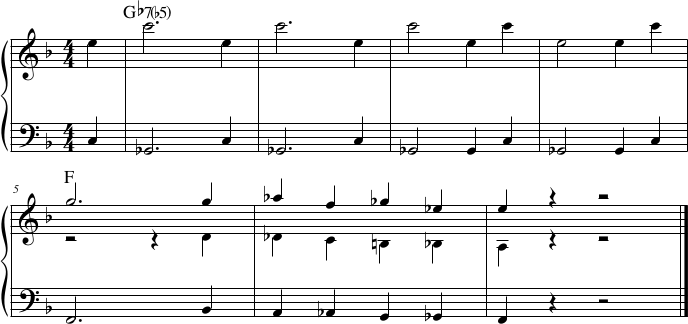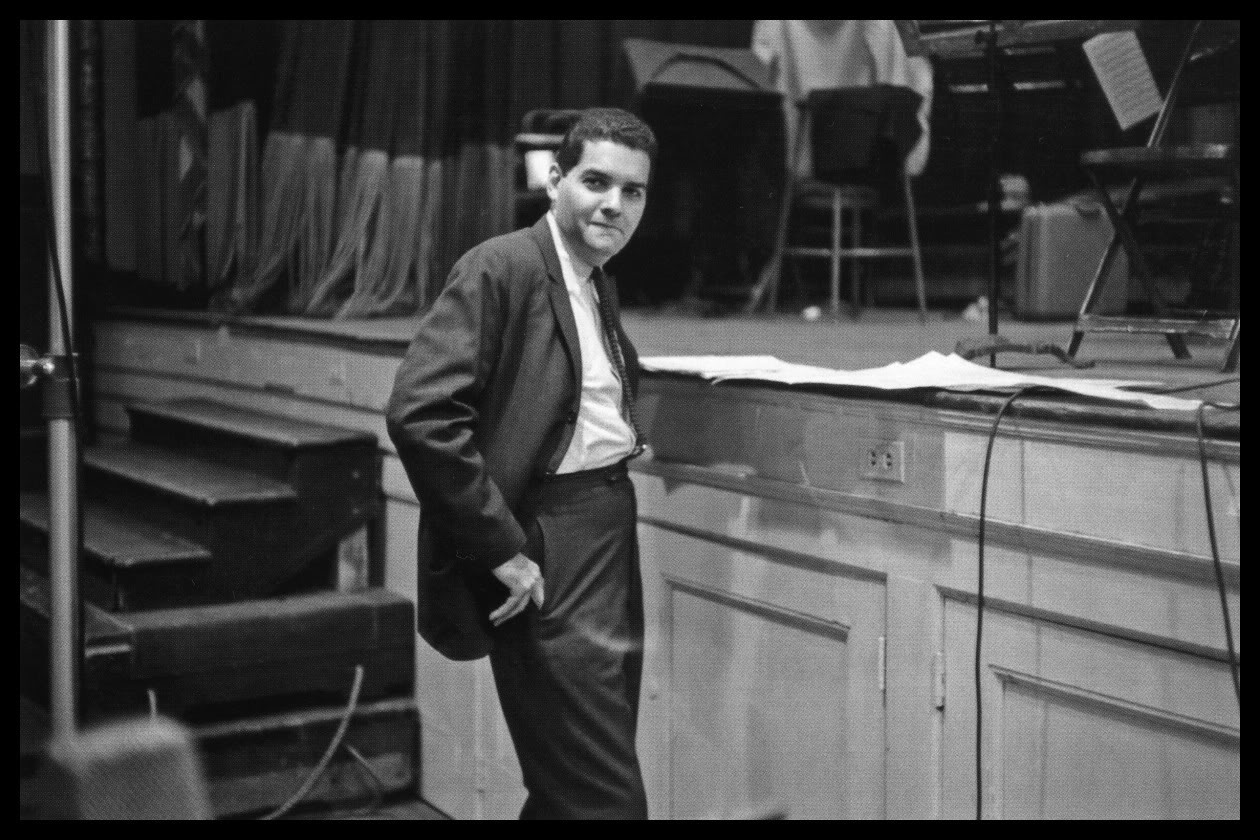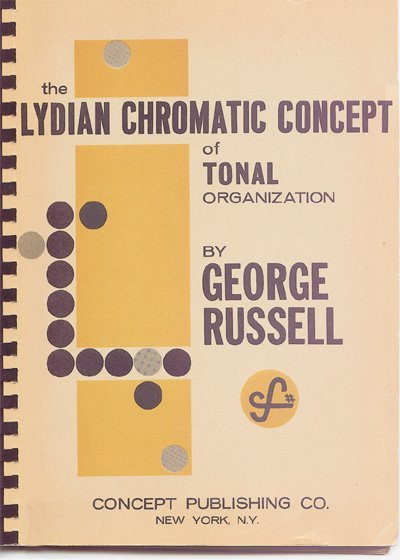In the Lydian Chromatic Concept of Tonal Organization (1953) George Russell makes the Lydian scale the centre of the tonal system, instead of the traditional major scale. His system was a great inspiration to a whole generation of jazz musicians, who used it to try to expand the language of their improvisations. Let’s see how it works.
- The premises of George Russell's Lydian Chromatic Concept
- Theoretical foundation of the Lydian Chromatic Concept
- The main scales of the Lydian Chromatic Concept
- The auxiliary scales in the Lydian Chromatic Concept
- John Coltrane: from chordal improvisation to modal jazz
- Conclusions, Pros and Cons of the Lydian Chromatic Concept
The premises of George Russell’s Lydian Chromatic Concept
The Lydian Chromatic Concept is not intended to be a rigid system of rules, but an alternative way of thinking to improvise in a more modern and free way. George Russell puts the Lydian scale at the centre of his system for historical and theoretical reasons.
The historical reasons reside mainly in the use of the diminished 5th by bebop musicians, in particular Charlie Parker and Dizzy Gillespie make extensive use of it in their compositions and improvisation. Let’s look at a couple of examples:
In the introduction to his tune Salt Peanuts, Dizzy Gillespie has the horn section perform a figure that repeatedly insists on the diminished 5th (C natural):

Charlie Parker’s Steeplechase plays the diminished 5th (B natural, on the F7 chord) on the second and sixth measures.

In proposing the adoption of the Lydian scale as the centre of his musical system, however, George Russell does not limit himself to the example of the two major bebop musicians, but proposes some theoretical reasons.
Theoretical foundation of the Lydian Chromatic Concept
Let us see in detail why George Russell considers the Lydian scale to be the most authentic natural scale, the one from which all other scales are derived.
1. The circle of fifths
The Lydian scale can be easily derived from the circle of fifths, e.g. C G D A E B F#. If I put these seven notes in order, I get the Lydian scale and not the major scale.
If we wanted to obtain a major scale from the circle of fifths, we would have to use a diminished 5th interval in the passage from B to F♮.
It must be said, however, that in the tonal system the major scale is not derived from the circle of fifths but is obtained from the sum of the triads built on the degrees I, IV and V (e.g. C, F and G) where the degrees V and IV are involved as the higher and lower harmonic of the starting note.
The major scale cannot be derived from the circle of fifths, but the Lydian scale can. This is one of George Russell’s arguments in claiming that the Lydian scale is the true natural scale.
2. Building a scale by summing two tetrachords
A slightly more complicated reasoning consists in deriving the scale from two tetrachords. According to this procedure, the major scale is formed by the tetrachord G A B C plus the tetrachord C D E F, where the latter has a certain tendency to modulate towards the key of F due to the presence of the semitone between E and F.
In the Lydian scale this tendency does not exist, as it is composed of the tetrachord G A B C plus the tetrachord C D E F#. George Russell argues that the Lydian scale is consequently more stable than the major scale.
3. The series of tensions
Another argument in favour of the Lydian scale lies in the series of tensions. In fact, in the chord built on a Lydian scale, all the tensions 9th, 11th, 13th are available and consonant, while in the chord built on the major scale, we can only use 9th and 13th because the perfect 11th is dissonant.

The main scales of the Lydian Chromatic Concept
The system proposed by George Russell is based on three scales, the first of which is the Lydian scale. The Lydian scale is equal to a major scale with the fourth degree augmented.

The Lydian scale can be derived from the fourth degree of a major scale. For example, the G lydian scale is on the fourth degree of the D major scale. In fact, the two scales share the same alterations.

From the Lydian scale George Russell derives the major chord built on the first degree, the dominant chord built on the second degree and the minor seventh chord built on the sixth degree.
This last choice is particularly interesting, since George Russell chooses as the principal minor chord the chord that in the equivalent major scale resides on the second degree.
In the musical system of European origin, the reference minor scale is instead the natural minor scale built on the 6th degree of the major scale. For George Russell, however, the minor mode is best expressed by the Doric minor scale, which has indeed assumed a very important role in modern music, both rock and jazz.
To complete the system with other types of chord, George Russell proposes two other scales, the augmented lydian scale and the diminished lydian scale.

The augmented Lydian scale has the alteration #5. This scale can also be found on the third degree of the ascending melodic minor scale. George Russell includes this scale in his system because he derives the augmented chord from it, which does not exist in the Lydian scale.

The diminished Lydian scale, on the other hand, has the alteration ♭3 and George Russell includes it in his system because he derives the diminished seventh chord from it. Unlike the previous two scales, the diminished lydian scale is not easily found in the traditional major scale system.
We can derive the diminished Lydian scale from the fourth degree of the harmonic major scale. However, the harmonic major scale is a very unusual scale. For this reason, it is much easier to derive the diminished chord from the 7th degree of the harmonic minor scale, as is the custom in the tonal music system.
Let us now continue the analysis of Russell’s system by analysing what he calls the auxiliary scales.
The auxiliary scales in the Lydian Chromatic Concept
George Russell completes his musical system with three other scales called auxiliary scales which are not directly derived from the Lydian scale. These three scales are:
- Auxiliary diminished scale, which is the tone/semitone diminished scale
- Augmented auxiliary scale, which is a hexatonic scale (also called “whole-tone” scale)
- Blues auxiliary diminished scale, which is a semitone/tone diminished scale



According to George Russell, the sum of the notes of these six scales results in the chromatic lydia scale, which is a chromatic scale of 12 semitones. In his musical system, George Russell also mentions two other scales: the major scale and the blues scale.
These two scales are not included in the system, but it seems that Russell does not feel comfortable “leaving out” two such important scales and therefore mentions them as further possibilities for the improviser.
The use of scales: bebop, modal jazz, avant-garde
After explaining how the scales of his system are composed and how they can be used in relation to different chord types, George Russell devotes much space in his manual to improvisation. In particular, he distinguishes several possible approaches to music that can be adopted during a solo.
Russell refers to ‘vertical polymodality’ as improvisation based mainly on chords, where each chord has its own scale.
This is essentially the method of bebop musicians, an approach that Russell aims to overcome by means of ‘horizontal polymodality’ in which a scale is common to several chords, as happens for instance in the modal music of Miles Davis.
Let us now complete the analysis of George Russell’s musical thoughts with some of his notes on the music of his contemporaries, in particular John Coltrane and Ornette Coleman.
John Coltrane: from chordal improvisation to modal jazz
In an interview a few years after writing the Lydian Chromatic Concept, Russell also talks about John Coltrane. The saxophonist explored the chord-based improvisation system to the fullest, particularly in pieces such as Giant Steps, Moment’s Notice and Countdown.
In a later period, Coltrane moved beyond chordal improvisation into modal improvisation, such as on the album My Favorite Things, and finally moved in the direction of even greater freedom, bordering on free jazz, on albums such as A Love Supreme.
While appreciating Coltrane’s work, George Russell identifies Ornette Coleman as the most innovative pioneer of a purely melodic vision of improvisation, free not only from the limits of individual chords but also from those of tonality. This is exactly the vision that Russell proposes in his Lydian Chromatic Concept.

Modern jazz improvisation, playing ‘in’ and playing ‘out’.
Speaking of improvisation, George Russell points out that the use of scales can be “absolute”, i.e. limited to the notes of the chosen scale, or “chromatically enriched” when using notes outside the reference scale.
Melodic phrases can be “internal” or “external” to the scale, “external” melodising consists of freely using all the intervals of the chromatic scale, without any limitations.
These different techniques were already being practised by musicians even before George Russell wrote them into his musical system. However, his contribution was fundamental in codifying, explaining and making explicit these new techniques.
This approach has become an essential part of jazz music and its didactics, just think how normal it is for a jazz musician to talk about ‘playing inside’ or ‘playing outside’, concepts that George Russell first expressed and discussed.
Conclusions, Pros and Cons of the Lydian Chromatic Concept
Reading the first few pages, following George Russell’s reasoning is anything but easy. The notes and clarifications written by George T. Endrey are very helpful in understanding Russell’s thinking. The mathematician was a friend of George Russell and manages to express the concepts of the Lydian Chromatic Concept in a more orderly and clear way, certainly more than the author himself.
Analysing the Lydian Chromatic Concept, we realise that although ordered differently, all the scales were in some way already known to us. George Russell does not propose new scales, but limits himself to reordering existing ones, placing the Lydian scale at the centre, instead of the major scale.
The system developed by George Russell is primarily aimed at improvisation and its main purpose is to overcome the chord-only improvisation typical of the bebop period.
According to the theories of the Lydian Chromatic Concept, the improviser always has the entire chromatic scale at his disposal, and his approach is therefore not intended to be rigid and closed. Russell strongly affirms that aesthetic reasons can and must prevail over any rule or principle.
Following Russell’s articulate reasoning is an entertaining and useful exercise, not least because it reminds us that any interpretation of things is always arbitrary. Even the system of tonality that the music of the last four centuries is bound to, and that we are used to considering as an indisputable matter of fact.
The Lydian Chromatic Concept has its strengths and weaknesses, sometimes the author confuses the theoretical and aesthetic planes, which should remain separate in any method or theory. However, the recordings of George Russell and Ornette Coleman show that it was possible to think differently, and the two musicians produced music of great quality.
The Lydian Chromatic Concept is therefore a document of inestimable historical value, which can help the jazz enthusiast, musician or simple listener to understand jazz music after the bebop period and in particular the whole avant-garde movement.
The improvising jazz musician can also try his hand at using the scales proposed by George Russell, hoping to get new ideas and stimuli to play in a more personal and sincere way. If used in this way, the theories of the Lydian Chromatic Concept can certainly be inspiring and useful.
If you have any questions about this lesson, please post them below. I would also appreciate it if you would share this article on social media, helping me to spread the word about the work of this great musician and scholar.


